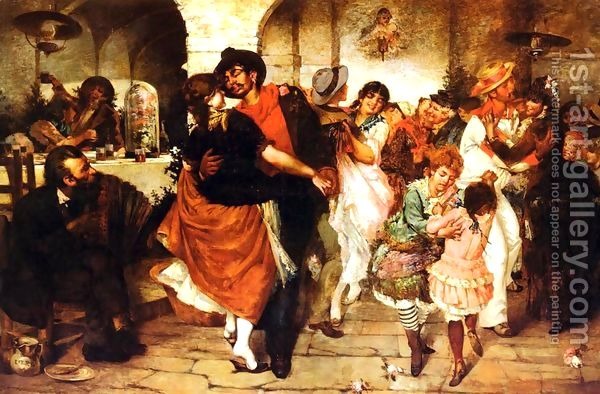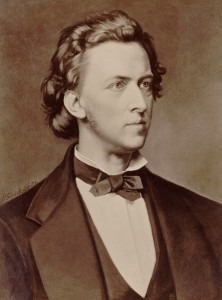
Mazurka Dance
With the exception of a couple of pieces for strings, almost his entire output was for the piano. Good thing he was good at what he did, then. I can’t really think of many other composers only associated with just one instrument, and this only further shows how revolutionary Chopin’s compositions were, to have achieved such fame on just one medium.
With that said, it’s hard sometimes to look past his most famous tunes: the Nocturnes, the Ballades and the odd Polonaise. There’s a whole wealth of innovative music out there, and we can find a huge amount of creativity and originality in what is, in my opinion, one of his most neglected genres: the Mazurka.
Unlike some piano styles which Chopin practically invented himself (such as the Ballade), the Mazurka had a long history before it fell into Chopin’s hands. The Mazurka was a Polish folk dance originating from before the 17th century. Although normally thought of to be a fast, exhilarating dance, the Mazurka as a genre drew on dances of many speeds, right from the lightning-fast oberek down to the slow, reflective kujawiak. This is why we see such a wide range of tempi in Chopin’s Mazurkas, as he forges his unique Mazurka style from all the different characters of dances available.
So what makes Chopin’s Mazurkas different, then? Really, the clue is that they were used by Chopin in the first place. The Mazurka was a folk-inspired dance, something of the people. It therefore stands to reason that it would be quite a bold move to take something out of the ‘folk’ sphere, and move it into the classical sphere. With something like a Waltz, you kind of expect it to be used by classical composers because of its haughty-taughty connotations of people whirling around in posh ball gowns. Not so much with a Mazurka. This wasn’t music for civilised dancing – this was for village parties, for having a drink and a good old foot stomp.

Chopin
You can find drones cropping up throughout all the Mazurkas – they’re a clear-cut indicator of the folk style. Your ear is immediately drawn to the sound, and you can’t mistake it for anything else. Because of this very clear, distinct sound, Chopin can then depart from convention in other ways. For example, in the middle section of his Mazurka in B-flat major (Op.7 no.1), he suddenly shifts to the distant key of G-flat major, writing a sinuous melody full of odd leaps and jumps. What holds it together? The drone. Chopin’s experimentation with a weird key and disjunct melody is countered by the inclusion of a familiar sound, meaning that the final result isn’t too whacky.
Other times, he doesn’t use anything ‘new’ as such – he just pushes the conventional to the extreme. In his Mazurka in D major Op.33 no.2, we reach a simple vamp after the submediant key, B-flat major. Here, there’s no real melody, just the chords repeating incessantly. He manages to avoid a dominant preparation for 16 bars, and the tension created just by going round and round in a circle is incredible. There’s no weird harmony or unexpected modulation here, just a clever use of conventional tension building.
Given the amount of exciting things about the Mazurkas, it’s surprising they’re not more well-known than they are. Perhaps the choice is a little overwhelming. There are a lot of Mazurkas to choose from – almost two hours’ worth. Listen out for how Chopin blends conventional folk material with his own unique harmonies – it is the way in which he combines elements of high art and folk music that give the Mazurkas their unique place within his oeuvre.
Arthur Rubinstein




Wow.. Nice article.. I haven’t seen Mazurkas from this perspective.. Thanks for throwing light on this..